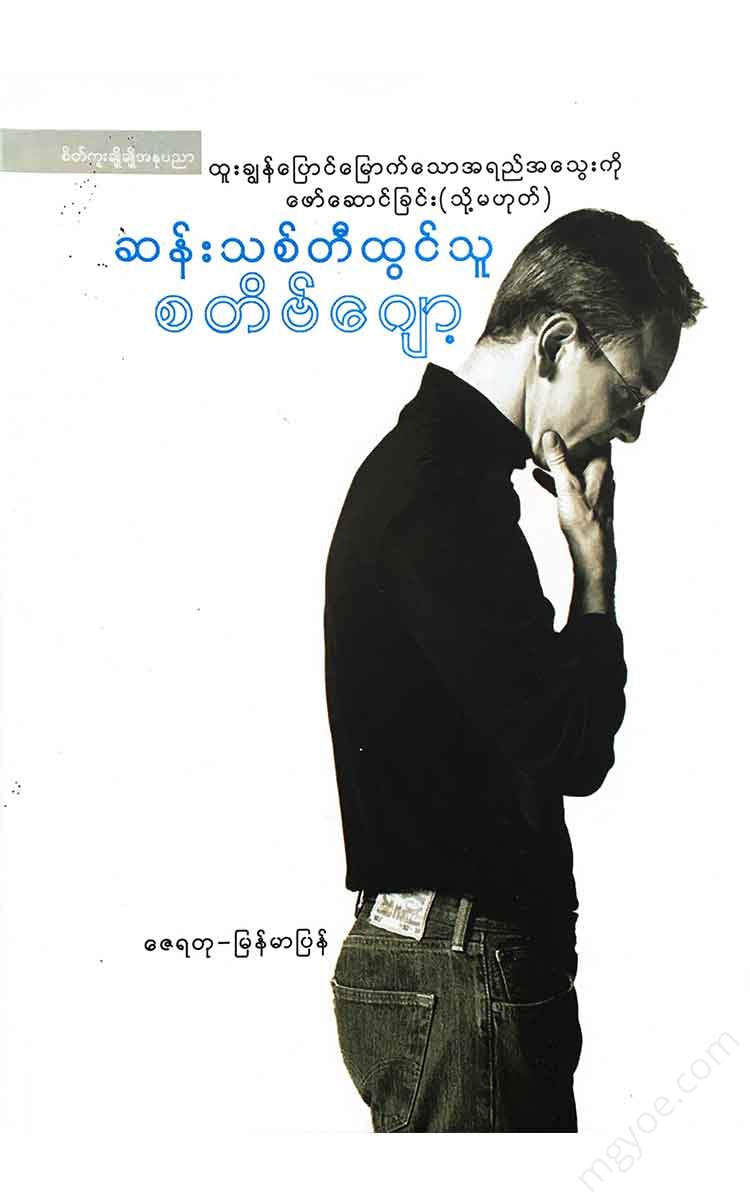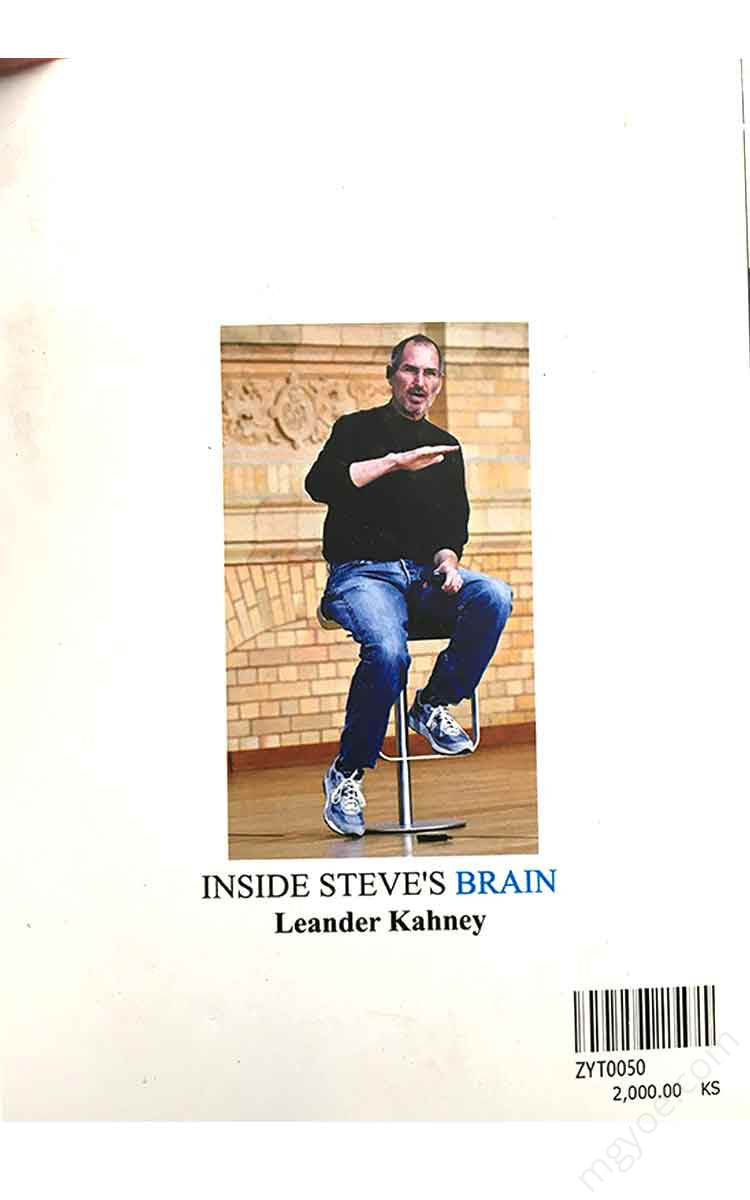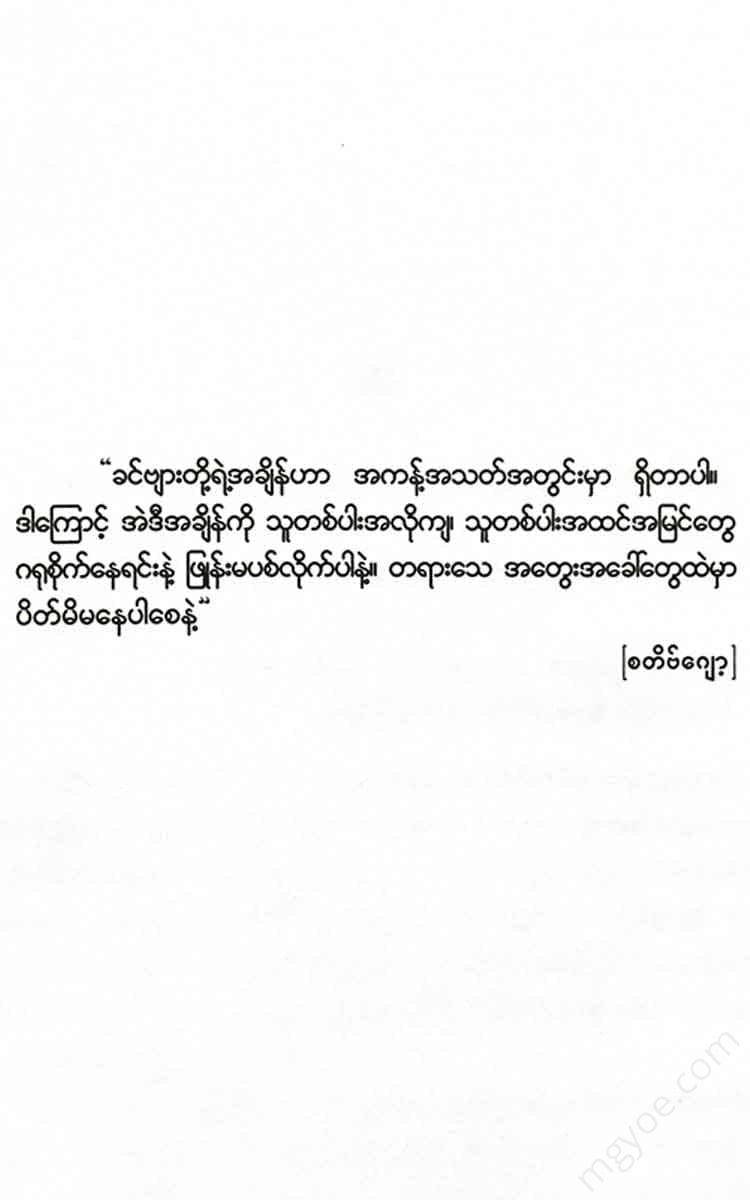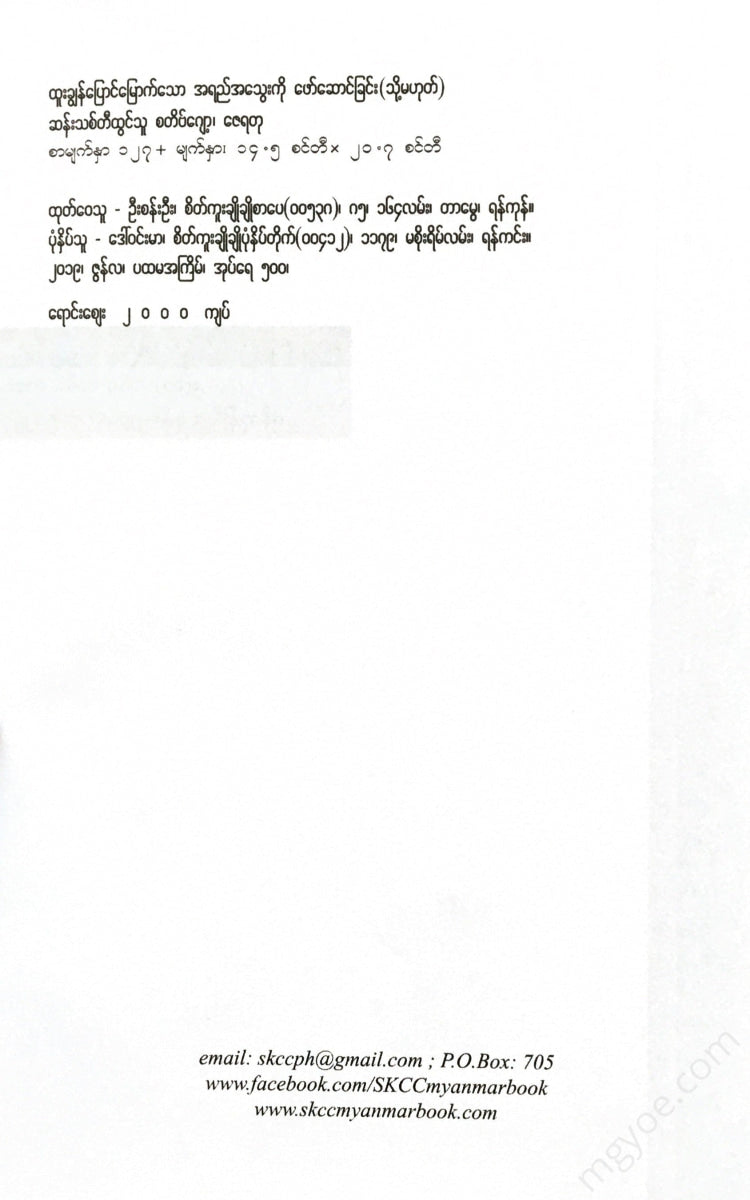စိတ်ကူးချိုချိုစာပေ
Zeratul - Steve Jobs the innovator
Zeratul - Steve Jobs the innovator
Couldn't load pickup availability
Steve Jobs, the innovator
Introduction
“Apple has a lot of valuable talent. But if it doesn’t do it right, the company… well, the company, I’m looking for the right word, could fail. Yes, it could fail.”
[Apple Interim Chief Executive Officer (iCEO)]
Steve Jobs' words upon his return to the role
Steve Jobs even treated the paper boxes that his gadgets came in as products. It was part of the aesthetic appeal, but it wasn't the only reason.
For George, taking a product out of its box is an important part of the user experience. So, like everything else he does, packaging is carefully considered.
George saw packaging as a way to help introduce new technology to consumers who weren’t familiar with it. Consider the first Macintosh computer, released in 1984. No one had ever seen anything like it at the time. Instead of a keyboard like early personal computers, the computer was controlled with a strange little device called a mouse. George had customers familiarize themselves with the mouse by having it come in a separate box. Having the customer plug it in to unplug it would help reduce the initial confusion when they first used it. Since then, George has carefully designed the packaging for each Apple product.
As with packaging, George controls every aspect of the customer experience. From TV commercials that entice customers to buy a product to museum-like retail stores where shoppers can shop, to the iPhone's easy-to-use software to the online iTunes music store that features songs and videos.
George was a man of incredible control. He was a demanding, demanding boss, and a ruthless boss. He was known for being a free-spirited man. He was often described as a man who fired people in elevators, manipulated his partners, and took advantage of others’ success. Recent biographies have portrayed George as a power-mad, unsympathetic man. Most books about George have been disappointing. They have portrayed him as cruel, angry, and belittling. What is George’s greatest asset? What do you think?
It's clear that he had done something right. George narrowly saved Apple from bankruptcy. He helped the company grow stronger than ever in ten years. Apple was able to make more money and produce more computers than ever before.
The iPad, introduced in October 2001, changed Apple forever. Apple went from a struggling company to one of the largest global manufacturing companies.
As the iPad evolved, it went from being an expensive luxury item to a diverse and important product category. George quickly transformed the iPad from a music player into a multi-million dollar business that facilitated the creation of many accessory companies and supporting players.
George quickly upgraded the iPad with better and better models, and newer and newer models. The iPhone, released in June 2007, revolutionized the entire cell phone industry. The iPhone's influence has led to scholars dividing the cell phone industry into two eras: the pre-iPhone era and the post-iPhone era.
iPad 2028 vuga:gzē səcope:qag: digital audio players series. At the time of this writing (March 2009), Apple has sold 163 million iPads and is on track to sell over 300 million by the end of 2009.
Apple has a monopoly on the MP3 player market, as has Microsoft. In the United States, the iPad has nearly 90 percent of the market. Nine out of every ten hard-drive, based music players sold are iPads. Three-quarters of all 2007 model year cars have an iPad plug-in. Apple has shipped 600 million copies of its iTunes jukebox software and sold three billion songs through its iTunes online store. iTunes in the United States has become the number one music retailer. The iPad has become an unstoppable force that even Microsoft can’t match.
So is Pixar. In 1995, George’s independent film studio produced the first fully computer-generated film, Toy Story. Toy Story was the first animated film to be produced by Pixar, and it was the first of a series of films that Pixar produced every year and was a surefire hit. Disney bought Pixar in 2006 for $7.4 billion. That made George one of Disney’s largest independent shareholders and one of the most important people in Hollywood. “He was the Henry Kaiser or Doc Disney of our time,” says Kevin Starr, a California State Librarian and historian.
George's work is extraordinary. He had an enormous impact on computers, on culture, and ultimately on Apple. He was also a self-made man and one of the richest men in the world.
"He was and remains the most influential inventor in this class of computers called personal computers," said Gordon Bell, a renowned computer scientist and unrivaled computer historian.
But there were times when George could have disappeared without becoming such a global celebrity. Specifically, in 1985, when George was fired from Apple.
Steve Jobs was born in February 1955 in San Francisco to a young unmarried couple, and within a week of his birth, his parents put him up for adoption. Steve Jobs was adopted by Paul and Clara Jobs, a working-class couple.
Soon the family moved to Mountain View, California, a small town full of fruit trees. Around that area, a global technology hub emerged that would later become known as Silicon Valley.
George's adoptive father was a mechanic. He was given the name Steven Paul George by his adoptive father. George was a mischievous young man. He says that his fourth-grade teacher had to give him money, candy, and flatter him to teach him. "If I hadn't corrected myself, I could have ended up in prison," he said.
A neighbor gave him Heathkits (electronic components that hobbyists can use) and introduced him to the wonders of electronics. This gave him an understanding of how things work inside. Even complicated things like TVs were no longer difficult for him to understand. “These things are no longer strange to me.” These things are really
"It's becoming more and more clear that these are not mystical things, but the result of human creation," he said.
George's birth parents supported him through college, as per the terms of his adoption contract. However, he dropped out after his first semester at Reed College in Oregon. He was interested in the visual arts, calligraphy (moze oss usqdep:opp sop:o£w«M> Quposo) sənşizons. George, penniless, picked up and sold cola bottle caps. He slept on the floor of friends' bedrooms. He ate the sati provided by a nearby Hindu temple to help him cope with his hunger.
George returned to California and immediately took a job at Atari, one of the first video game companies, to raise money to travel to India. He soon quit his job and set off on a journey of discovery with a young friend.
After returning from that trip, George met another friend, Steve Weitzner. He was a personal computer genius and had no interest in selling it. George had different ideas. Together, they founded Apple Computer Inc. in George's bedroom. Soon, they were building computers by hand in his parents' garage with some teenage friends. To finance their work, George sold his box wagon. Weitzner sold his calculator. George was twenty-one at the time, and Weitzner was twenty-six.
Apple took off like a rocket to catch the tail end of the early PC revolution. It went public in 1980 and had the largest public offering since Ford Motor Company in 1956. In 1983, Apple was ranked 411th on Forbes magazine’s list of the 500 most profitable companies in a single year. It was the fastest growth rate in business history. “At twenty-three, I was worth over a million dollars. At twenty-four, I was worth over ten million dollars. At twenty-five, I was worth over a hundred million dollars. None of that mattered. The reason I didn’t do it for the money,” George said.
Weznex was a hardware genius, an engineer who created microchips. George understood the whole point of manufacturing. George's design and advertising ideas made the Apple II the first mass-produced computer that was successful for ordinary consumers. This turned Apple into the Microsoft of the early eighties. Fed up with this situation, George went on to create the Mac, the first computer to feature a revolutionary graphical user interface (GUI) that he had developed in his computer research labs. George did not invent the GUI that is used on almost every computer today. But he did bring it to the masses. George's original goal was to make technology as accessible as possible to everyone.
In 1985, Apple tried to fire George, accusing him of being unproductive and self-serving. He lost a power struggle with then-CEO John Sculley, and George left before he was fired. George, who was intent on revenge, founded NeXT, a company that would sell upgraded computers to schools and eliminate Apple from the industry. He also bought a struggling computer graphics company for $10 million from Star Wars director George Lucas, who was in need of divorce money. He renamed the company Pixar and spent a decade building it with $60 million, eventually becoming one of Hollywood's premier animation studios, producing some of the most popular and highest-grossing animated films.
NeXT, on the other hand, was not as successful as it seemed. It sold only 50,000 computers in eight years, and it left the hardware business and focused on selling software to a handful of buyers, such as the CIA. This is where George could have disappeared from the public eye. With NeXT's failure, he could have written an autobiography, or, if he had, remained a venture capitalist like many others before him. But behind the scenes, NeXT's success was incredible. NeXT el capdogs cypel Apple af salgeme:saozos 03&:38:Coole: Apple became the foundation of many of its technologies, most notably Apple's most respected and influential Mac OSX.
George's return to the company in 1996, his first visit to Cupertino (Apple's headquarters) in eleven years, was the greatest comeback in business history. "Apple has made the most dramatic second leap forward in technology history. Its resurgence has been truly breathtaking," Google CEO Eric Schmidt told Time magazine.
George made one smart move after another. The iPad was born, and the iPhone followed closely behind. Even the Mac, once an expensive handheld device for the privileged class, was making a comeback. As Apple's reputation grew, the Mac became the trend of the times. In ten years, George had not made a single mistake. But he made one big mistake. He joined Napster (a music file-sharing service) in 2000, and
Apple has been eyeing the digital music revolution. Buyers are buying CD burners, DVD drives, and iMac computers, and advertising them as video editors.
Sold. “I feel like a fool,” he told Fortune magazine.
It wasn’t all smooth sailing. George was lucky. One morning in 2004, an X-ray revealed a cancerous tumor in his pancreas. Pancreatic cancer is a death sentence. It can send a person to the brink of death very quickly. “The doctor told me to go home and take care of my affairs. It was the doctor’s code for preparing for death. It was the next ten years.
"I was trying to tell my children everything I had to say in a few months. I was trying to make it as easy as possible for my family. It was giving me time to say goodbye," George said. But that evening, lab results showed that the tumor was a very rare type of cancer that could be removed by surgery. George underwent surgery.
During 2008, he lost weight rapidly. He appeared at product launches, surprisingly.
Aung is seen looking thin. Both he and Apple have denied any wrongdoing, but it is clear that George's health is deteriorating. In December, before the Mac World Expo, George unexpectedly took a six-month leave from Apple. He has a digestive disorder that he says can be cured by changing his diet. He says he will need to take a break from work to get back to normal. Tim Cook, who has been in charge of the company, has been taking over as CEO in his absence.
George led Apple with a unique combination of artistry and cutting-edge intellectual property. He was more like a creative artist than a businessman.











